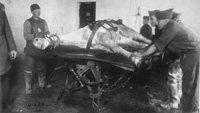U.S. Army Veterinary Corps History
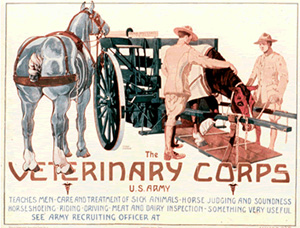
The U.S. Army Veterinary Corps was established 3 June 1916 with the National Defense Act. At the beginning of World War I there were 72 veterinary officers and no enlisted men.
Within 18 months this grew to 2,312 officers and 16,391 enlisted personnel. This rapid growth in the middle of the war required the establishment of recruitment, training, policies, procedures and equipment.
The American Expeditionary Force required large numbers of animals to accomplish a variety of missions ranging from cavalry mounts, artillery transport to logistical supply and ambulance service. The rugged and muddy French terrain was better suited to animals than gas-powered engines.

This mule wagon is an example of one of the many ways draft animals were utilized in World War I. General Hagood, Chief of Staff of the Services of Supply, placed the number of horses and mules in the A.E.F. at 165,366 as of 30 October 1918.
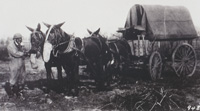
Disease detection, prevention and treatment played an important part of the Veterinary Corps officer work. Contagious disease accounted for the following losses according to one account:
Mange 47 percent
Influenza 4.03
Lymphangitis .03
Glanders 0.17
Total 19.70
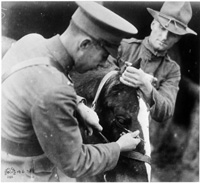
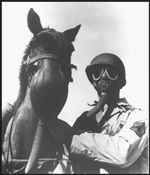 Gas attacks were deadly on both soldiers and animals. Masks and other protective measures were developed to provide force health protection. Non-contagious diseases accounted for the following loses:
Gas attacks were deadly on both soldiers and animals. Masks and other protective measures were developed to provide force health protection. Non-contagious diseases accounted for the following loses:
Wounds and Lameness 2.06 percent
Mustard Gas .03
Debility 7.05
Misc. 1.75
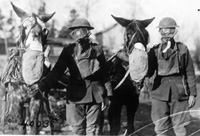
The total losses were extremely high. Over thirty percent of horses and mules were sick or injured resulting in losses of over 55,000 animals.
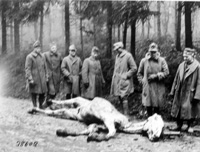
Veterinary Corps officers and enlisted personnel transported those that were well enough to treat back to Veterinary Hospitals for treatment. Walking, horse drawn ambulance, or motor horse ambulance did transport. Many with injuries could be transported by train. The S.O.S. expected an Army Veterinary Hosptial with a total strength of 68 men to transport 20,000 disabled animals an average of 75 miles in a 47 day period.
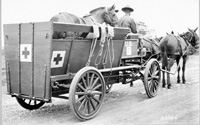
At the field Veterinary Hospitals, teams of Veterinary Corps officers performed surgeries and then placed the animals in recovery and convalescence wards until they recovered. Those rcovering could then be sent back into the field.
